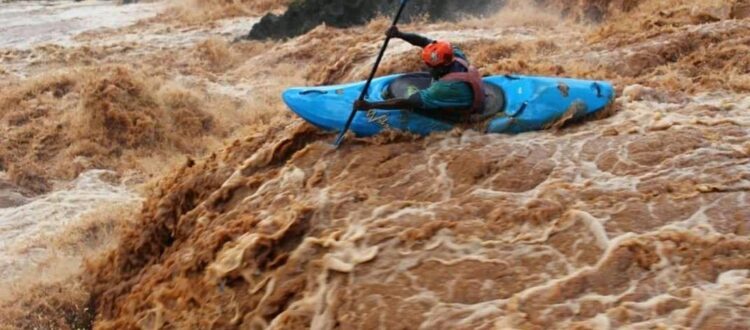Waterfall Kayaking Basics and the Top 5 in the U.S.
Some of us are relatively casual paddlers – we get out when we can on weekends, have a couple outings per month, and are content with a packraft or day trip with friends and family. For others, however, that simply doesn’t cut it. The adrenaline junkies out there (maybe even YOU!) have to be putting it all on the line. From plummeting through massive foamy bouquets to barreling off huge falls into the great unknown, it’s all on the table for them.
There are a ton of awesome falls across the country that are ripe for plunging – and we are here for them all. We’ll dive in (pun intended) a bit to detail what it takes to finesse a waterfall drop, as well as look at some of the best ones in the U.S.
Kayaking a Waterfall – The Basics
First thing you’re going to want to do is study the drop you’re taking on. Like, for hours. You want to have a super clear visual path mapped out in your head for taking off at the right point and where you’re hoping to land. Even if it’s your second time hitting the same fall but at a different time of year, water levels or erosion can play a part in altering the water flow. Considering the speed of your kayak and underwater rocks are some examples of things to keep in mind when mapping out your descent.
Speaking of speed – it’s the most important factor of your approach to the fall. The ideal speed is just a little bit faster than the flow of the water. Going too fast may result in you flying too far off, and going too slow could cause your kayak to plunge inward and flip. As you reach the edge, make sure you get a good yet subtle stroke on the lip of the fall – it’s a great way to angle yourself properly upon descending. Some people even stroke the curtain of the fall on their way down.
After hitting that stroke, make sure to get your paddle out of the way so it doesn’t get caught on anything and strike you. Most people do this by clinging to it diagonally so that it pencils into the water along with your boat. If in doubt – toss it!
The two ways to land while kayaking are boofing or penciling. Penciling (think of pencil diving when swimming) is when you angle the nose of your kayak downward for a seamless entry into water. Boofing is when you land your kayak flat down, and is only recommended on short and shallow falls. That’s because those types of water levels have more aerated water that acts as a cushion. That said, it does put a lot of stress on your back, and is seldom recommended.
5 Must-See Falls to Kayak in the US
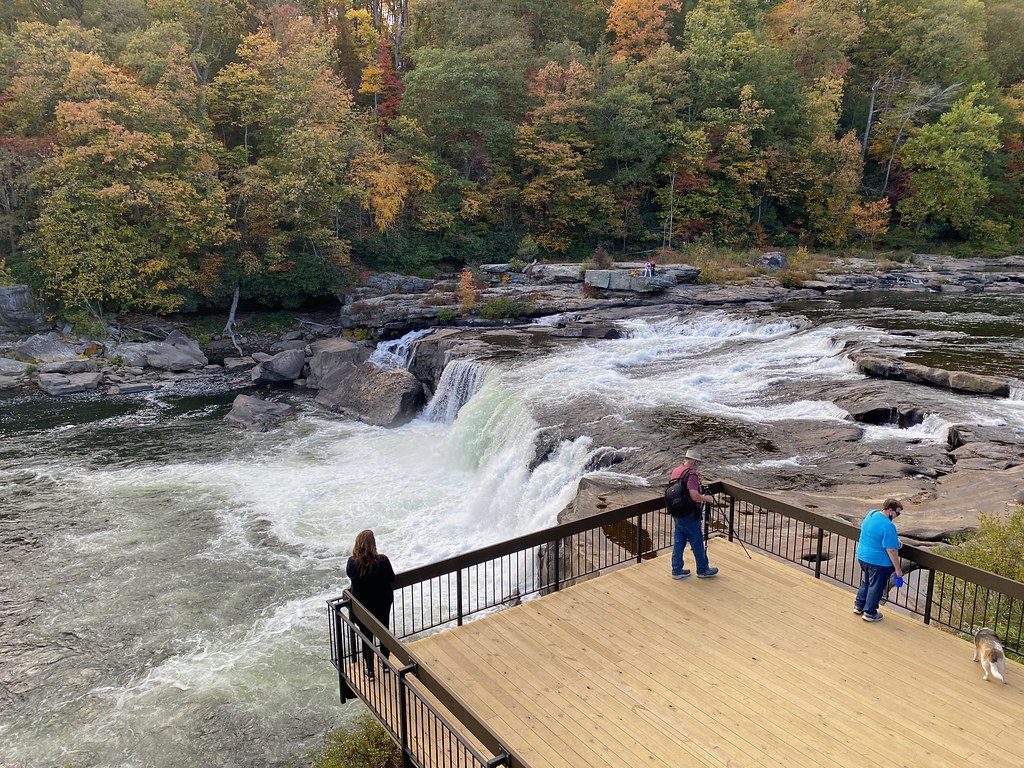
1. Ohiopyle Falls, Pennsylvania
Stretching the entire length of the Youghiogheny River, Ohiopyle Falls is great for beginner boofers. It’s just about the perfect size for a boof depending on the time of year, dropping about 20 feet and even less during higher waters. It’s not super difficult, but coasting the river then taking a plunge off Ohiopyle is a great way for beginners to transition to diving falls. The fall colors and flat rocks really paint a beautiful autumn scene for this east coast gem. The catch is that it’s only open one weekend per year for the Over-The-Falls festival.
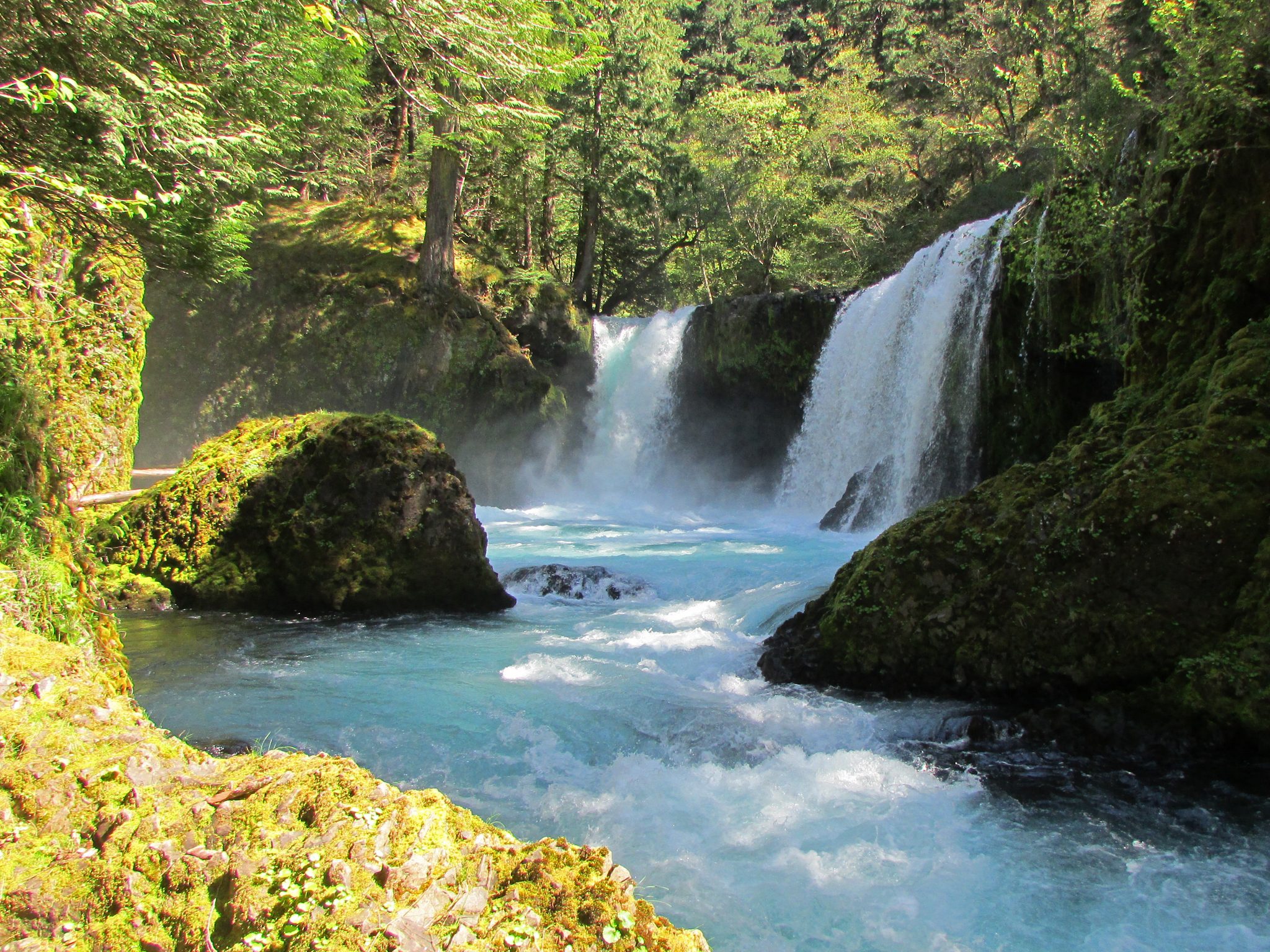
2. Spirit Falls, Washington
This is no beginner waterfall – in fact, this one has actually hospitalized many kayakers bold enough to take it on. That said, it has been done, and should only be left to waterfall experts out there. A staggering 30 foot drop launches you off a distractingly picturesque burst of roaring foam into a cloudy abyss below. Framed with the scenic evergreen climate of the PNW, this fall is ripe with challenges for the most seasoned paddlers. A bucket-list drop, no doubt. Take a gander into how kayaker Chris Wheeler and his crew narrowly survived the fall, via Oregon Kayaking.
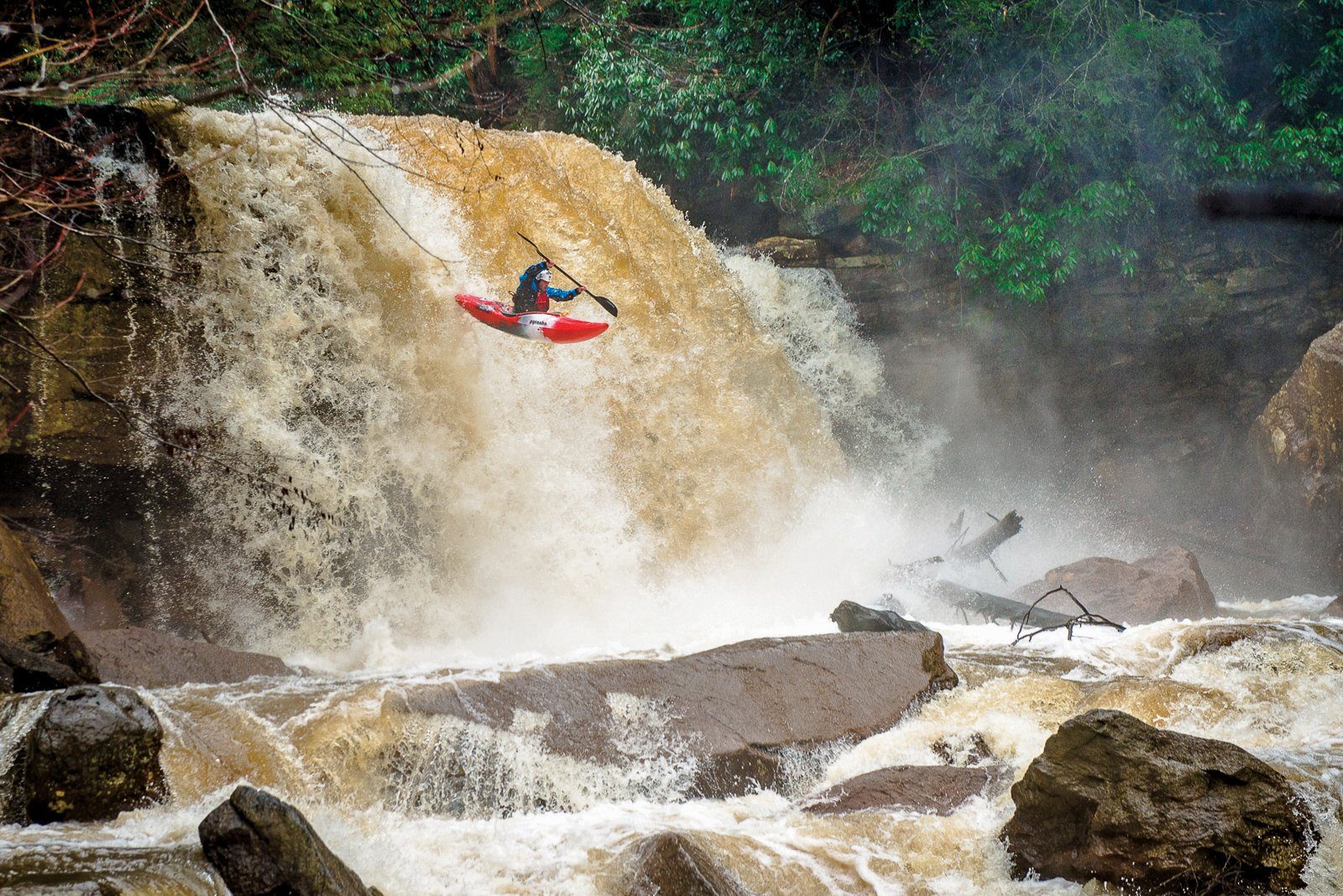
Douglas Falls near Thomas, WV. January 2, 2017. (J. Alex Wilson)
3. Gluteal Mash, West Virginia
On the North Fork of the Blackwater river is the Gluteal Mash, paved by a sprawling rock garden. A large 30 foot drop is met below by an uncertain fate, as the bottom pool isn’t very deep and the water isn’t quite aerated enough to provide adequate cushioning. So if we can’t pencil or boof, how do we take on this trial? The answer is a quite meticulously mapped out approach that’s only viable with levels above 1.5 on the putin gauge. This is because it’ll be too shallow otherwise, and loss of momentum would be very dangerous. The short answer is using the approach slide which should be entered in the center then veering left – doing so will help center you against the right-angled slide, leading you to the clean center lip. American Whitewater can walk you through the fall in greater detail, as well as the rest of the river.
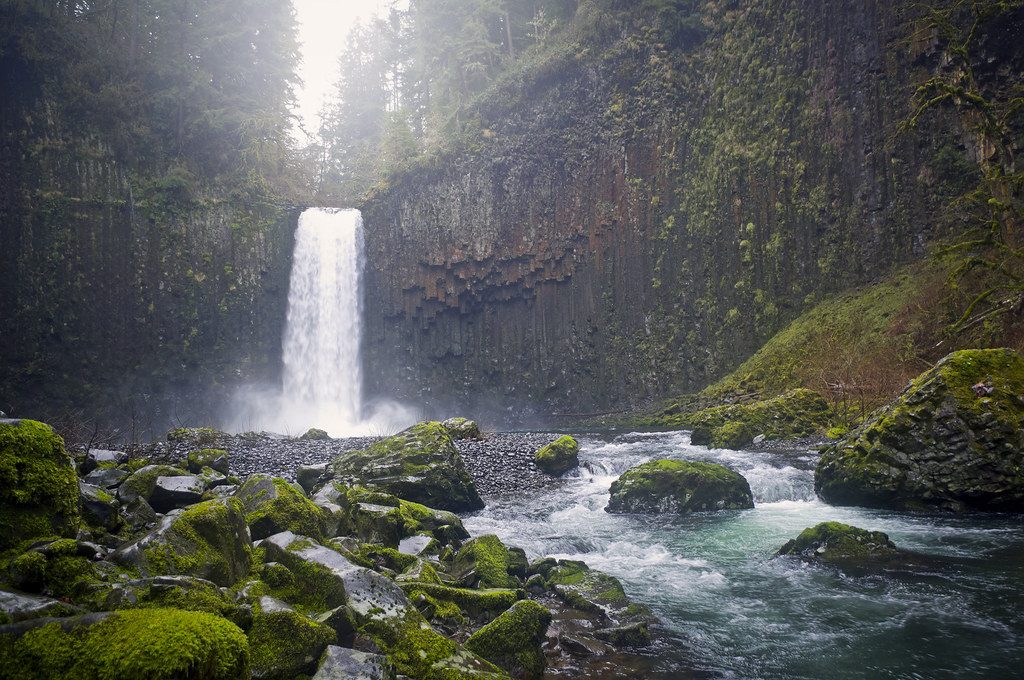
4. Abiqua Falls, Oregon
This beautiful waterfall drops in at 90 feet and is shaped perfectly – something that’s rare for falls this high up. The approach is pretty straight forward, and any seasoned waterfall kayaker can pull it off, but the height urges extreme caution, nonetheless. Confidence is very key here. It was actually the site of the 2002 World Record Waterfall Descent by Tim Gross – who took on the fall like the beast he is, in a less than graceful fashion. Read about how he came out on top against all odds.
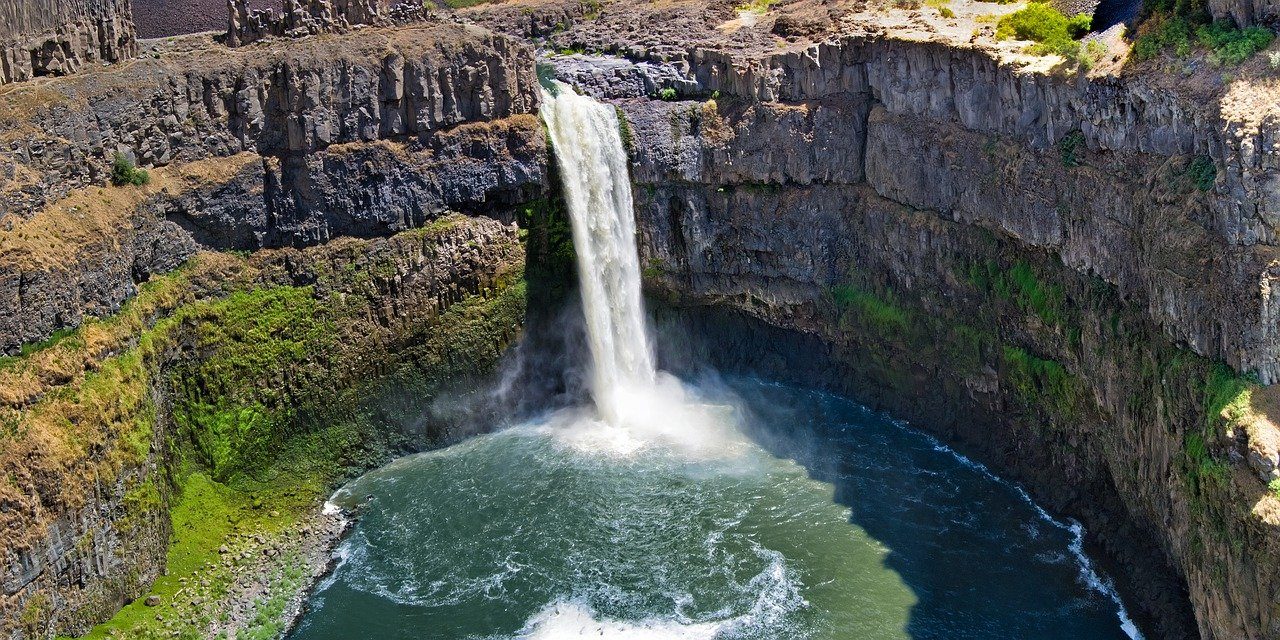
5. Palouse Falls, Washington
There is truly no shortage of waterfalls that are gorgeously shaped and scenically festooned with the vibrant and sprawling evergreen foliage in the Northwest. However, Palouse Falls is located more East, towards Spokane and Idaho, seeing a more arid climate but is still an epic sight that was the result of the ice age floods, carving out this historic waterfall. How anybody could be bold enough to embrace this 189 foot plunge is honestly beyond us. It wasn’t too crazy for Tyler Bradt, apparently, the 22-year-old who set the record for highest waterfall drop in 2009 at Palouse. Check out the full video of him preparing for the plunge, as well as jaw-dropping footage of him breaking the record.
From breathtaking plummets to fun light-hearted drops and splashes, you can always trust Watershed Drybags to keep your gear safe and sound, no matter how boldly you challenge gravity. Our favorite pick for below deck would be the Ocoee – it’s the perfect size!

